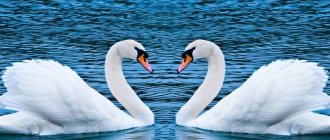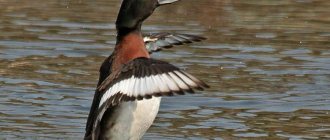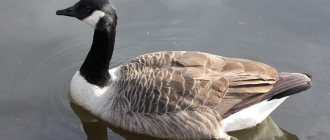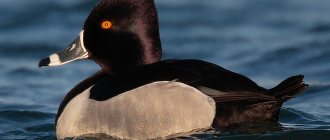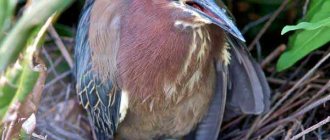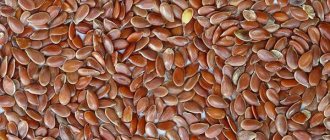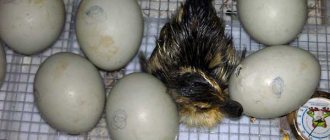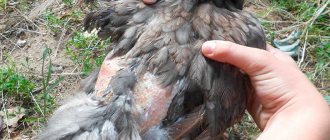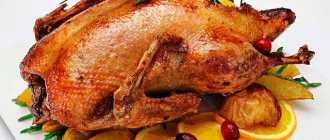In anticipation of the coming winter, our migratory birds are leaving their nesting grounds and heading south. Storks, cranes, swans, geese, ducks and many other birds rush to distant countries to spend the winter there, since they simply cannot survive in the harsh Russian winter and the lack of sufficient food. We decided to see where the birds we knew from childhood fly away and where that very avian south is located.
About a third of all bird species nesting in our country are migratory. Different species of birds choose different countries for wintering, and some species, divided into several populations, winter in several regions at once, similar in their climatic parameters and convenient for migration. Egypt, India, China, the American state of California and even South Africa - this is an incomplete list of regions where representatives of the Russian fauna spend the winter.
Gray cranes
Among all the cranes living in Russia, this species is the most numerous. Gray cranes nest almost throughout the entire country from the western borders to Transbaikalia and Yakutia. For the winter, these birds fly away in different ways and choose the shortest migration routes. Gray cranes from European Russia and Western Siberia spend the winter in Turkey, Iran, Iraq, and part of the population winters in Egypt and Sudan. And gray cranes from Central and Eastern Siberia prefer to go to India and Southeast China for the winter.
How do ornithologists study birds and their migration?
Bird ringing is one of the methods used to study them. Scientists place a small, individually numbered metal or plastic ring on the bird's leg or wing. They also use special nets known as mystic nets as a way of capturing wild birds for research.
This way, birders can capture the same bird multiple times, measure and weigh it, and collect other important information over long periods of time. Sometimes scientists use satellite data to track bird migration routes.
Common cuckoos
Cuckoos also do not sit still and with the onset of cold weather they set off on a long journey. The majority of cuckoos living in Russia choose India, Vietnam, Thailand and Malaysia as their wintering grounds. It is possible that part of the population from European Russia spends the winter in Africa, south of the equator.
The danger of migration
Sometimes birds must fly through harsh habitats, such as deserts where there is little water or oceans where there is no place to rest and feed.
Even if they find food and water, the birds need to land on the ground, where they risk becoming prey.
There may be many predators along the migration route. Depending on their size, migrating birds become prey for wild cats, foxes, wolves, humans and other animals. Some birds may be attacked by larger bird species while in flight. Sometimes difficult weather conditions make the flight difficult and even lead to death. It happens that birds collide with airplanes, which is dangerous both for themselves and for the airplanes.
Whooper swans
These majestic and beautiful birds nest in vast areas from the tundra to the mountains of Southern Siberia, choosing lakes rich in food. For wintering, whooper swans also choose a region closer to the main nesting site. The inhabitants of European Russia fly to the Black Sea, Turkey, Romania and Bulgaria. Whooper swans from Western Siberia prefer to winter in the Caspian Sea, Iran and Azerbaijan, and birds from Eastern Siberia and the Far East fly to China, Korea and Japan.
Where do birds fly for the winter?
The pack follows its instinct. Old individuals pass on routes to young ones. Birds are considered intelligent creatures - this is indicated by their excellent orientation to the stars or flights at night. There is an assumption that the navigation of birds depends on the magnetic field.
Scientists believe that the beak contains mineral and iron - it serves as a compass.
More often, birds settle in places that are similar to their native ones. The forest is more suitable for nesting. Zones must have a warm climate. Therefore, birds fly to places where living conditions are practically no different from their usual ones.
Gray cranes
Numerous individuals can be found from Transbaikalia to Yakutia. In winter, they leave the region, choosing the shortest routes. Turkey, Iran, Iraq and India are preferred as new habitats.
Common cuckoos
This bird is distinguished by two things - a specific ability to predict the amount of time a person has left to live and laying eggs in other people's nests. Despite the last fact, the cuckoo will take care of the chick, but after it hatches. Individuals prefer to eat all day long - their diet consists of a large number of insects. Since they compete for food, they do not form flocks. However, they also fly away for the winter alone. The final destination is Africa, Asia and Arabia.
Whooper swans
We are talking about majestic and beautiful birds, whose nests are usually located in vast areas of the tundra and mountains of Southern Siberia. They choose lakes with high food content. During wintering they do not fly far. The ideal places would be Türkiye, Romania and Bulgaria.
White storks
European inhabitants. They love challenges, which is why they are found in South-East Africa in winter. Some individuals travel to Tanzania and Ethiopia.
Rooks
We are talking about the only representative of the Voronovs who leaves their own home in the winter. Recently, cases have become more frequent when individuals remain “at home” - they simply equip their nest better and stock up on food.
Many nomadic rooks begin their journey in October. The month of their return is considered to be March. The bird usually winters in Turkey.
White geese
With the onset of November, the geese fly away. You can easily recognize them in the sky, as the flock forms a wedge. One school contains ten individuals. The leader is always located in the center, leading the other winged creatures. Wintering areas have a temperate climate.
White-tailed eagle
Predators occupied the entire territory of Russia. They fly to Pakistan and Iran for the winter. Some individuals fly to China and Japan.
Kites
This species of bird prefers to fly far away, for example, to Africa. It will not fly to regions with a humid equatorial climate.
Black swifts
The wintering of these birds occurs at the beginning of August. They spend three to four weeks on the journey. They fly in flocks, sometimes stopping to rest. They are distinguished by their speed and excellent reaction to capture food on the fly, for example, insects. This is an ideal option for birds, because then they don’t have to stop extra to find food. Swifts have simplified the hunting process for themselves - they often fly during the daytime, so they can easily see their prey. The favorite wintering country for swifts is the island of Madagascar and all the warm places in Africa. They love hot climates and lots of insects.
Arctic tern
Antarctica is considered their wintering place. Birds fly around the globe twice a year.
Swallows
Due to their small size, it is difficult for them to travel long distances, so they put a lot of effort into doing so. Swallows reach warmer regions gradually, with regular breaks. Not everyone knows that their legs are not designed for walking, so most of their life is spent flying. Swallows winter in Turkey. They begin traveling in early autumn and arrive home in March. Upon arrival, swallows continue to use their nests from last year.
gray heron
They fly away at the end of August. Because of their large wings, they are immediately able to cover long distances. The flight altitude reaches up to two kilometers above the ground, which is why they are so difficult for humans to see. For this purpose, scientists even deliberately monitor their movement. Herons winter in Holland.
Nightingale
A distinctive feature is considered to be loud singing. It can often be heard in the forest or village. The nightingale uses nesting sites at the top of trees and eats insects and berries. For the same reasons, he flies to Africa in winter.
Starling
He usually builds nests in people's houses, as he is not afraid of them. It uses local farming as a source of constant food. In the absence of a populated area, the winged ones settle in the hollows of trees and feed on what is available in the forest. When cold weather sets in, starlings head to Asia.
Song thrush
Winged birds always stay in large flocks, so when they leave for the winter, you can see massive groups flying. This makes it easier for them to survive the journey, since the adult bird helps the young. They, like their other relatives, make stops to rest and eat. They usually travel to Europe and northern Africa.
Quail
Quail winters in the Balkans. Sometimes goes to the Middle East. With the arrival of cold weather, males set off on a journey - they scout out the path and begin to settle in new territories. Then the females take off on their journey - they arrive at already equipped areas and live there. The quail's diet includes larvae, so the forest would be an ideal habitat.
Field lark
Birds are small in size. Their nests are located on the ground, mainly in spacious fields. The basis of the diet is seeds and beetles. Their journey begins before the cold weather sets in. When migrating, they stay in flocks and head to the south of Europe.
Finch
We are talking about little birds that live in flocks and are always ready to help each other. Their diet consists of worms and fruits. Winged birds winter in southern European regions and the Caucasus. Due to their small size, it is difficult for some individuals to move long distances for the winter, so they fly to warm zones in Russia.
Oriole
The oriole is easy to recognize - it is distinguished by its bright color. This is not always a plus, because birds of prey easily notice it, which was the main reason for building nests in hard-to-reach places. For example, these could be treetops. Winged birds react sharply to weather changes, so they fly to Africa and India in August.
White wagtail
It often nests far from people near rivers. With the onset of autumn, it goes to the Mediterranean, where it spends the winter.
Robin
Forests are considered its habitat, and it builds its houses in spruce trees. Individuals fly away one by one. In April they fly home from southern Europe.
White storks
These birds live in Europe and the eastern part of their range is located in European Russia. These large birds are not exactly lovers of an easy life, because they fly to South-East Africa for the winter, making them one of the most prominent migrant travelers. Some birds settle in Ethiopia, Kenya and Tanzania, the rest fly to South Africa and Namibia.
Birds that arrive first
The birds' return depends on the distance they travel and their wintering location. Thanks to long observations by scientists, it was possible to draw up a schedule for the return of some individuals :
- from the eighteenth to the twentieth of March - the arrival of rooks;
- from the twenty-fifth of March to the sixth of April, starlings fly home;
- From the first to the tenth of April, both larks and swans arrive;
- 11-20 of the same month, ducks, cranes and seagulls fly to their native lands;
- from the twenty-fifth to the thirtieth of April - the return of redstarts;
- beginning of May - arrival of swallows;
- the first half of the same month - the return of nightingales and swifts;
- end of May – arrival of the oriole.
Now you know where birds fly from Russia for the winter. It happens that they do not return on the specified dates - but this is only an exception to the rule.
Rooks
The early arrival of these birds is associated with the approaching spring, but they also fly from different places. The main wintering regions of rooks are located close to the nesting sites. Rooks from Western Siberia fly to Kazakhstan, Turkmenistan and Uzbekistan, and rooks from the northern part of European Russia have chosen the Black Sea coast. At the same time, some of the rooks that nest in the Stavropol, Krasnodar Territories and other southern regions do not fly anywhere at all.
Annual cycle of birds
The life of birds, as well as other animals, on most of our planet is subject to changing seasons. The only exceptions are those areas where tropical forests are located.
The annual cycle of birds consists of four main stages. The first of these is the breeding season. Then comes molting, the seasonal migration of birds. The last stage is wintering.
As for seasonal migrations, they are not a continuous period for birds. There are flights in spring and autumn. At the same time, they are separated from each other by the wintering stage. The spring migration of birds can be considered as a phenomenon that is partially associated with preparation for the breeding stage. Autumn migrations are a search for food to preserve the species.
White-tailed eagle
These large birds of prey are found in almost all territories of Russia, although they are extremely rare. White-tailed eagles go to Iran, Pakistan and Afghanistan for the winter, while birds nesting in the Far East prefer to fly closer to Japan, Korea and China.
Conclusion
Many people believe that birds fly away because they are not comfortable with changes in the weather. Most migratory birds have good, warm plumage that traps heat. However, the main reason for flights is the lack of food in winter. Birds that fly to warmer climes in winter feed mainly on worms, insects, beetles and mosquitoes. During frosts, such living creatures either die or hibernate, so during this period of the season the birds simply do not have enough food.
Kites
Kites that fly to the European part of Russia and the southern regions of Siberia for the summer are also not averse to flying long distances for the sake of a comfortable and warm winter. These birds of prey winter over vast areas of sub-Saharan Africa, excluding regions with a humid equatorial climate.
Sensational discovery!
However, on May 21, 1822, a sensation spread around the world! Near Mecklenburg , an 80-centimeter arrow was found in the body of a dead stork, piercing the bird’s neck. The arrow was not from here and belonged to one of the African tribes . A desperate brave man with an arrow in his throat managed to overcome the entire migration route, returning home from the equatorial wintering grounds.
This story shed light on the mysterious disappearance of birds in winter. A stuffed specimen of the famous arrow stork can still be seen in the zoological collection of the University of Rostock.
Repeated reports of white storks with African arrows in their bodies helped make the discovery: European birds winter in equatorial Africa. However, ringing, which naturalists began to carry out since the 90s of the 19th century, made it possible to accurately determine the places where birds fly to for the winter.
Black swifts
These birds often nest in Russian cities, and their presence is easy to notice by their characteristic calls. Black swifts are one of the fastest birds on the planet and are not afraid to fly long distances. Most of the Russian swifts reach the very south of Africa and winter in South Africa, Namibia, Botswana, Angola, Zambia and Mozambique. But a small proportion of black swifts winter in India.
How do birds feed during migration?
Some birds eat regularly during migration, while other species store special high-energy fat in their bodies before long flights. This allows you to not think about food for several weeks.
Most birds that need food during migration fly at night in small flocks. They feed and rest during the day to avoid some predators.
Arctic tern
But the most outstanding migratory birds of our fauna are Arctic terns. They nest in the polar and subpolar regions of Russia, but for the winter they fly to Antarctica, that is, these birds fly across the entire globe and do this twice a year. Apparently, the climate in Southeast Asia or Africa is not the same, and Arctic terns prefer the cool polar summer rather than the tropics.
The material is copyrighted; when copying, a link to the article or the website travelask.ru is required
How do birds navigate?
Navigation is complex because it requires birds to understand three things: their current location, their destination, and the direction they must follow to get there.
Some birds use the Sun and stars for navigation. Others navigate by natural features such as rivers, mountains or coastlines. Some birds can even use their sense of smell. Although birds are also capable of moving on cloudy days and flying across the ocean, where there are no clear landmarks. So how do they do it?
Scientists have concluded that birds sense the Earth's magnetic field thanks to magnetoreception. Birds' beaks contain something called magnetite, an iron-containing mineral that acts as a compass. Other scientists believe that birds can see the magnetic field with their own eyes. Science doesn't yet know everything about bird orientation, but they probably use multiple navigation methods.
Wooden bird houses
With the onset of spring, starlings, swifts, rooks, nightingales, larks and others return to their homeland. A person can prepare for the arrival of feathered friends by making a birdhouse.
Why do birds need birdhouses?
Spring for birds is the time for hatching chicks. A new house - a birdhouse, carefully attached high to a tree trunk or the roof of a house, will immediately be inhabited by fussy starlings. The higher the wooden house, the less likely it is that cats will be able to reach the kids.
There is enough information on the Internet about how to make a birdhouse. To make it yourself, you don’t need an abundance of material or any special skills. You can ask adults and build a birdhouse together.
The first birdhouses were made a long time ago, in Holland, from clay. These were large containers with holes. Gradually, clay was replaced with wood, and houses began to be made in rectangular shapes.
You should not make a birdhouse from coniferous trees; after time, such boards will begin to release resin. The bird will stain its plumage and may die. The pungent tar smell scares off future residents.
The inside of the boards should be rough; they do not need to be processed, because birds will have nothing to cling to if the structure of the walls is perfectly smooth.
Which birds spend the winter at home?
Not all birds fly south, because there are many species that have adapted to living in cold weather. For the most part, they feed from garbage cans and also visit landfills. They are often fed by people who place seeds in special feeders.
The following birds do not leave their homeland:
- Sparrows.
- Bullfinches.
- Tits.
- Pigeons.
- Crows.
- Woodpeckers.
- Shchury.
They can be seen on the streets, in parks and forests at any time of the year. At the same time, it wouldn’t hurt for people to at least sometimes feed the birds, since in cold weather they often have to go hungry.
Airspeed
The flight speed of birds during migration is relatively low. One of the slowest is the quail - it flies at a speed of approximately 40 km/h ; the black swift is among the fastest (160 km/h). But during the flight, birds can spend a lot of time on stops, and in general, their long journeys - for example, to Africa - can last for 2 - 4 months. The speed of spring migration when migrating species return is higher - in spring birds return home faster than in winter they fly to wintering grounds.
Bird signs for spring
Early rooster crowing in severe frosts is a harbinger of warm weather. A bullfinch chirps under the window - a thaw. The white wagtail, a recognized harbinger of ice drift, always arrives on the eve of the opening of rivers.
Rook on the mountain - spring is in the yard. The rook has arrived - the snow will melt in a month. The seagull has flown in - soon the ice will melt.
The rooks arrived before March 14 - the snow will melt early. The rooks fly straight to the old nests - there will be a friendly spring, the hollow water will run away all at once. The rooks arrived early - in anticipation of a warm spring.
Best articles: The largest land, sea, predatory and other mammals
The lark began to sing - it’s time to go out into the arable land. When the nightingale begins to sing in mid-May, spring will come together. A migratory bird flies together - and spring will be friendly. The early arrival of cranes means early spring.
